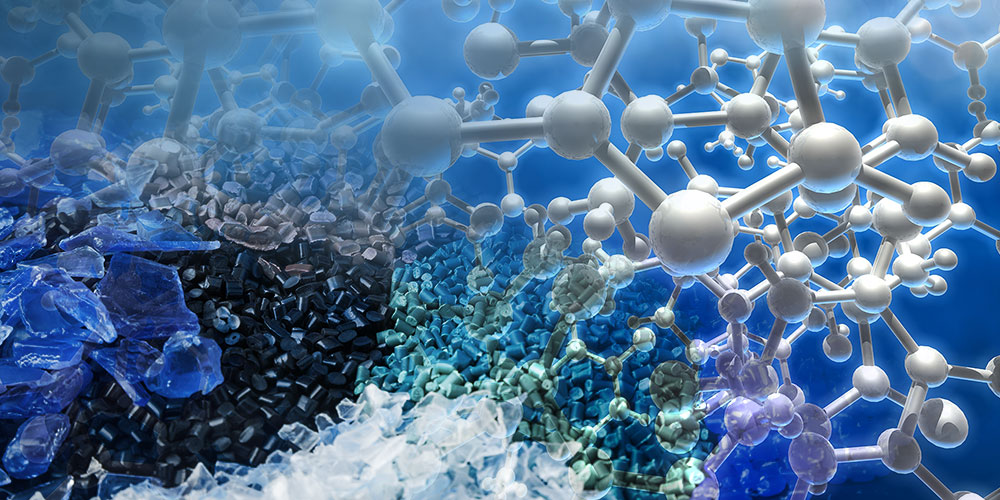

Sample Preparation Strategies for DNP Experiments
Dynamic nuclear polarization (DNP) substantially improves the sensitivity of solid-state nuclear magnetic resonance (NMR) studies, particularly of biological materials and pharmaceutical formulations. One of the benefits of DNP-NMR is the increased data acquisition speed, enabling for quicker examination of solid-state materials.
Why use DNP-NMR?
In the study of structural biology and material science, Nuclear Magnetic Resonance (NMR) spectroscopy is at the forefront for determining structural components of compounds. NMR, while essential for accomplishing this goal, presents a low level of sensitivity in part to the small magnetic moment of the studied nuclei. In turn, small polarization of the nuclear spin reservoir causes minute NMR signal intensities, resulting in less-than-ideal results.
The use of DNP-NMR can significantly bolster NMR signal intensities by assisting in transferring large Boltzmann polarization of the electron spin reservoir to the nuclear spin reservoir. Mechanisms of DNP-NMR experiments vary based on solid- and liquid-state samples. These mechanisms are as follows:
- Liquid-State NMR: Overhauser effect
- Solid-State NMR: Cross-effect, solid-effect, and thermal-mixing
Sample preparation for DNP-NMR experiments
Preparing a samplerequires a few tools, including Bruker’s DNP-NMR spectrometer, rotor, and an appropriate solvent for the sample. Also, unpaired electrons must be present—specifically, free radicals must be added to the sample in order to make the DNP function appropriately.
Polarizing agents used in DNP experiments are usually nitroxide-based free radicals, unreactive radicals that are typically able to withstand oxidation while being able to maintain a significant level of solubility in a diverse range of aqueous solvents. The most common nitroxide-based free radicals include AMUPol, TEMPO, and TOTAPOL. Ideally, a concentration range of sample would be in the 5-20 mM range. If the concentration is too low, there may be too little electrons present to propel DNP enhancement.
Dissolving the radicals in the solvent is one of the first steps in preparing a sample for DNP experimentation. To deliver radicals to the sample, the most efficient method is to use a solution form. Using a cryoprotectant solvent can be crucial for protecting the sample during exposure to low temperatures. For example, if protein is used in a sample, that protein may need to be in a cryoprotectant solvent in the presence of low temperatures to prevent protein denaturation due to ice crystal formation.
If a sample is not soluble in an aqueous solution, such as in the case of membrane proteins and fibrils, further steps are required to distribute radicals homogenously. Although a radical stock solution can be helpful for mixing or suspending these samples, most are centrifuged via a radical solution. A higher concentration of radicals is used to reach ~10 mM. Glycerol may need to be reduced with samples containing a large number of lipids, as these lipids often contain their own cryoprotectant properties.
In the preparation of a sample for experiments using the Bruker solid-state DNP-NMR spectrometer, researchers start with a solid, powdered sample equivalent in mass to that of a full rotor. Then, the solvent is slowly added to the solid sample, mixing the sample and solvent together to form a wet paste. This paste should be slightly thick and absent of excess water. More sample may be added to reduce wetness, continuing to ensure that the mixture maintains a paste-like consistency. This paste mixture is then packed into the full rotor and the NMR experiment is conducted.
Bruker’s spectrometer for DNP-NMR experiments
Bruker’s solid-state DNP-NMR spectrometer is designed to enhance NMR studies by improving signal intensities in solid-state NMR studies. Applications include:
- DNP-NMR of Biological Solids: Enhancement of small peptides, membrane proteins, and soluble proteins.
- Material Science: At the molecular level, the DNP-NMR spectrometer by Bruker allows for characterization of hybrid silica materials, commonly used in drug delivery, purification devices, and catalysis.
- DNP-Enhanced SPMAS of 13C-Proline: A polarizing agent is incorporated into shared solvent or by using a radical on the sample. Under low temperatures (100 to 120 Kelvin), the samples are measured under MAS, and the NMR experiment is then performed.
- Expansin Protein Binding to Plan Cell Walls: The Bruker DNP-NMR spectrometer can help detect expansin mixed with plant cell walls, using a REDOR filter to select signals from the expansin 13C signals. Following the REDOR filter, spin diffusion shows correlations between the cell-wall polysaccharides and expansin.
References
- Liao SY, Lee M, Wang T, Sergeyev IV, Hong M. Efficient DNP NMR of membrane proteins: sample preparation protocols, sensitivity, and radical location. J Biomol NMR. 2016;64(3):223-237.
- Le D, Casano G, Phan TNT. Optimizing Sample Preparation Methods for Dynamic Nuclear Polarization Solid-state NMR of Synthetic Polymers. Macromolecules. 2014;47(12):3909–3916.


